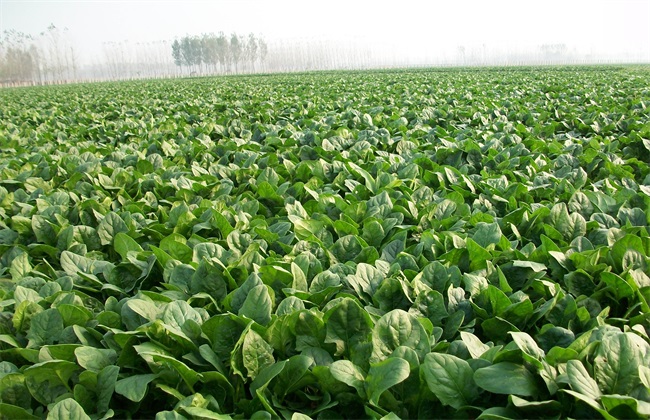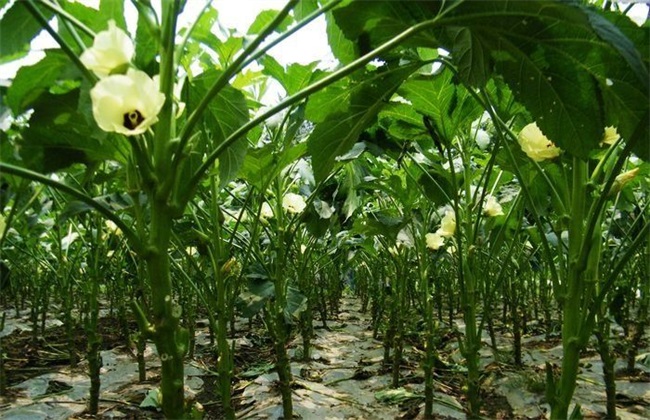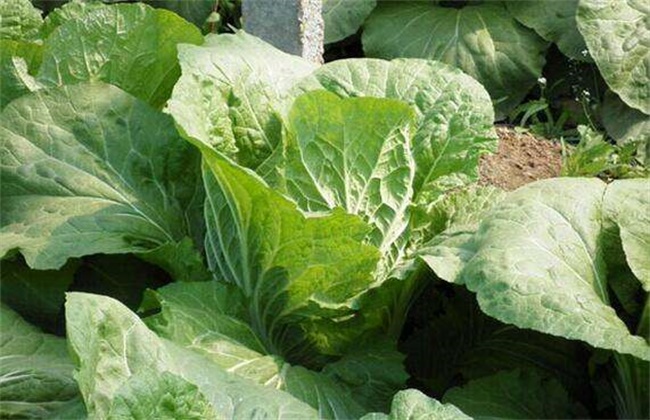Field management technology of spinach
Spinach can generally be cultivated in four seasons, but the quality of spinach cultivated in spring is the best. So catching spring planting is the most important thing for growers. However, the poor growth of spinach is easy to occur in hot summer and cold winter, so the field management measures are particularly important, which can directly affect the quality and yield. Let's learn how to do a good job in field management of spinach.

1. Soil
If a nursery bed is established on flat land, soil improvement cultivation can be carried out if the soil is out of balance with acid and base. Replace the 30 cm thick soil layer with nutritious soil with ingredients such as mature organic fertilizer and river sand, or soil such as natural black soil and humus soil. This can enhance the soil fertility and permeability, which is beneficial to the growth of spinach.
two。 Raising seedlings
When spinach is cultivated in early spring, it is generally necessary to build a plastic film-covered shed to raise seedlings. The nursery bed had better be 1 meter to 1.2 meters wide, and it is appropriate for people to stand on both sides of the ditch. The ridge surface can be about 4 cm higher than the ground level, and the groove depth is about 20 cm. The nursery bed should be dried for 3 to 5 days or disinfected by chemical spray before raising seedlings. After emergence, get rid of the seedlings harmed by diseases and insect pests, and thin seedlings, yellowing bad seedlings. When the seedlings grow to two true leaves, alternate the seedlings again, leaving enough room for growth until the seedlings are transplanted. Pour water thoroughly before transfer, and bring as much soil as possible when raising seedlings.
3. Fertilizer application
When improving the soil, add some compost, retting and other farm organic fertilizer as base fertilizer. If it is natural humus soil, you can apply less fertilizer. After the seedlings are unearthed, they should immediately use light fertilizer and water, thin fertilizer and more application to promote growth. After the emergence of seedlings, you can apply nitrogen fertilizer once to prepare for seedling transplanting. After transplanting, less fertilizer and water should be applied to avoid root burning. As long as spinach is growing, it is necessary to apply nitrogen fertilizer in real time, combined with a small amount of phosphorus and potassium fertilizer. The stem is easy to harden with more potash fertilizer, but the leaves are easy to lack yellow without potassium fertilizer.
4. Water control
After growing leaves, spinach can be watered once, and when growing two leaves, combine with seedlings to weed and fertilize, cooperate with watering. During the prosperous period, a large amount of water is needed to maintain the transport of nutrients, and it can be watered thoroughly every three days. When it is cold in winter, you can water the leaves several times when they reach three leaves, but reduce the watering times later to prevent frostbite.
5. Temperature
Seeds can germinate at about 18 to 30 degrees, and the optimum temperature for emergence is 20 to 25 degrees. It is easy to lose water when the temperature is more than 30 degrees during the growing period. In general, there is no need to manage too much when the climate is suitable in autumn. Low temperature and frost days in winter can build a shed to survive the winter to prevent frostbite or bolting. Natural growth in the open field can generally meet the need for light, but mulching cultivation can adjust the time to receive light.
Spinach cultivation has done a good job of the above management points, no matter in that season, spinach can maintain the good growth of spinach and resist diseases. When high-quality spinach is harvested, the market value can be greatly improved.
Related
- Where is it suitable to grow horseradish in China? it is expected to see the middle altitude horseradish in Alishan.
- How to prevent tomato virus disease reasonably? (Control methods included)
- Many people like to plant towel gourd on the balcony. What are the main points of this method and management?
- What crops can chili peppers be mixed with?
- Fertilization techniques and matters needing attention in Tomato
- What are the grafting techniques for peach seedlings in spring?
- Harm and control methods of root swelling disease of Chinese cabbage
- What are the pests of sweet potatoes? How to prevent and cure it?
- Symptoms, causes and Control methods of navel Rot in Tomato
- The cause of "Cucumber rotten bibcock" in Farmers' planting Cucumber and its Control Plan



